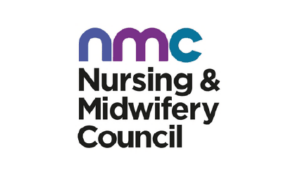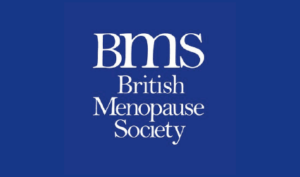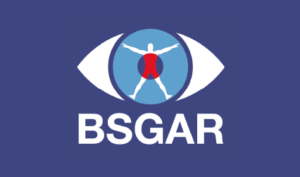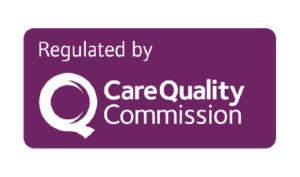1. INTRODUCTION
The aim of this policy is to outline the principles and procedures that govern consent by patients/service users receiving care and treatment via House of Health.
It is presumed that most clinical procedures undertaken will not require specific additional consent for each attendance, and those patients/service users will generally give implied consent for any such clinical work at House of Health. However, the following principles outlined in this policy will be followed at all times, and any risk aspects will be outlined to patients/service users in advance as part of any clinical treatments.
All patients/service users under the age of 18 must be accompanied by a parent/guardian for consultations.
2. RELEVANT CQC FUNDAMENTAL STANDARD/H+SC ACT REGULATION (2014)
Regulation 11: “Consent”
3. POLICY
The following principles will apply:
4. PROVISION OF INFORMATION
The provision of information is central to the consent process. Before patients/service users can make a decision about treatment, they need comprehensible information about their condition and about possible treatments/investigations, including their risks and benefits (including the risks/benefits of doing nothing). They also need to know whether additional procedures are likely to be necessary as part of the procedure, for example, the removal of particular tissue. Once a decision to have a particular treatment/investigation has been made, patients/service users need information about what will happen subsequently.
Patients/service users and those close to them will vary in how much information they want and in the form they understand. There will always be an element of professional judgment in determining what information should be given. However, the presumption must be that the patient/service user wishes to be well informed about the risks and benefits of the various options. Where the patient/service user makes clear (verbally or non-verbally) that they do not wish to be given this level of information, this should be documented.
A leaflet is attached at Appendix 1 for issue to patients/service users regarding consent issues.
5. WHO IS RESPONSIBLE FOR SEEKING CONSENT?
The person carrying out the consultation/treatment is ultimately responsible for ensuring that the patient/service user is genuinely consenting to what is being done; they will be held responsible in law if this is challenged later.
Where oral or non-verbal consent is being sought at the point when the consultation/treatment will be carried out, this will naturally be done by the clinical professional responsible. However, if the person cannot write or is physically unable to sign a form prior to consultation/treatment, a record that the person has given verbal or non-verbal consent should be made in their notes or on the consent form.
Implied consent will be assumed for many routine consultations with patients/service users. Where implied consent is to be assumed by the person, the following will apply:
6. COMPLETING CONSENT FORMS
The person providing the information must be competent to do so: either because they themselves carry out the consultation/treatment or because they have received specialist training in advising patients/service users about the treatment, have been assessed, are aware of their own knowledge limitations, and are subject to audit.
If the patient/service user signs the form in advance of a consultation/treatment (for example, at a pre-assessment clinic), the doctor involved in their care on the day should sign the form to confirm that the patient/service user still wishes to go ahead and has had any further questions answered.
The Consent Form will be retained in the patient/service user’s notes within our booking system, SEMBLE.
7. REFUSAL OF TREATMENT
If the process of seeking consent is to be meaningful, refusal must be one of the patient/service user’s options. A competent adult person is entitled to refuse any treatment.
Mental health legislation does provide the possibility of treatment for a person’s mental disorder and its complications without their consent. This legislation does not give power to treat unrelated physical disorders without consent. If, after discussion of possible treatment options, a patient/service user refuses all treatment, this fact should be clearly documented in their notes. If the patient/service user has already signed a consent form but then changes their mind, the person (and where possible the patient/service user) should make a record of this.
Where a patient/service user has refused a particular intervention, the person must ensure that any other appropriate care to which they have consented continues to be provided. The person should also ensure that the patient/service user realizes they are free to change their mind and accept treatment if they later wish to do so.
Where delay may affect their treatment choices, they should be advised accordingly.
If a patient/service user consents to a particular procedure but refuses certain aspects of the intervention, the doctor must explain to the patient/service user the possible consequences of their partial refusal. If the doctor genuinely believes that the procedure cannot be safely carried out under the patient/service user’s stipulated conditions, they are not obliged to perform it. The doctor must, however, continue to provide any other appropriate care. Where another health professional believes that the treatment can be safely carried out under the conditions specified by the patient/service user, transferring the patient/service user’s care to that health professional may be appropriate.
8. PHOTOGRAPHY, AUDIO, AND VIDEO RECORDINGS
Photographic, audio, and video recordings made for treatment purposes form part of a patient/service user’s record. It should always be made clear in advance if any photographic, audio, or video recording will result from that procedure.
Photographic, audio, and video recordings made for treating or assessing a patient/service user must not be used for any purpose other than the patient/service user’s care or the audit of that care, without the express consent of the patient/service user or a person with parental responsibility for the patient/service user. If the person wishes to use such a recording for education, publication, or research purposes, consent in writing should be obtained, ensuring that the person giving consent is fully aware of the possible uses of the material. In particular, the patient/service user must be made aware that they may not be able to control future use of the material once it has been placed in the public domain.
Photographic, audio, and video recordings made for treating or assessing a patient/service user and from which there is no possibility that the patient/service user might be recognized, may be used within the clinical setting for education or research purposes without express consent from the patient/service user, as long as this policy is well publicized. However, express consent must be sought for any form of publication.
If the person wishes to make a photographic, audio, or video recording of a patient/service user specifically for education, publication, or research purposes, consent to make the recording—and then seek their consent to use it—should be obtained. Patient/service users must know that they are free to stop the recording at any time and that they are entitled to view it if they wish, before deciding whether to give consent to its use. If the patient/service user decides that they are not happy for any recording to be used, it must be destroyed. As with recordings made with therapeutic intent, patient/service users must receive full information on the possible future uses of the recording, including the fact that it may not be possible to withdraw it once it is in the public domain.
9. REMOTE/VIDEO CONSULTATIONS – CONSENT
The consent of the patient is implied by their acceptance of the invitation and entry into the video consultation.
It is good practice to confirm and record their consent for a video consultation and confirm whether the consultation is being audio or video recorded.
The identity of the patient should also be checked as part of the consenting process.
If an adult lacks capacity, you must obtain consent from someone with authority to act on their behalf for healthcare decisions and/or proceed with the consultation on the basis that it is in the patient’s best interests to do so.
Young people under 16 should be assessed by phone or video if consulting remotely to assess capacity and safety.
Ask for consent if a trainee, interpreter, chaperone, or a multidisciplinary team (MDT) member wants to join the consultation.
During an examination, ask others to switch off their camera or leave the room if their presence is not appropriate or the patient does not consent.
10. CCTV – CONSENT
House of Health does not have CCTV in the consultation room where remote services are provided.
11. RECORDING OF REMOTE CONSULTATIONS
If the person wishes to use such a recording for education, publication, or research purposes, consent in writing should be obtained, ensuring that the person giving consent is fully aware of the possible uses of the material.
If the patient/service user gives their consent, the recording must be securely stored and not shared with any third party without further consent.
12. TRAINING
All staff must be trained in this policy, particularly the principle of consent and the implications for practice.
13. MONITORING AND REVIEW
Compliance with this policy will be reviewed regularly through audits and feedback mechanisms. The policy will be reviewed annually, or sooner if significant changes occur in relevant legislation or guidance.
14. APPROVAL
This policy will be approved by the governing body of House of Health and will be made available to all staff members.

















